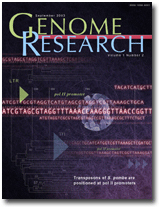Home
Henry Levin heads the Section on Eukaryotic Transposable Elements, which analyzes LTR retrotransposons and the integration of their cDNA into the chromosomes of host cells. Work focuses on the mechanisms that direct integration to specific chromosomal sites and the impact integration preferences have on the cell. Our studies include integration in the genome of Schizosaccharomyces pombe that occur specifically in pol II transcribed promoters. We have also applied our methods of high throughput sequencing to map 1 million integration sites of HIV-1 in cultured cells. These data led to the important discovery that the integrase of HIV-1 directs integration to highly spliced genes and interacts with splicing factors. Additionally, we study an integrase independent mechanism of retrotransposition that may also occur with HIV-1. We continue to develop novel methods of transposon integration to address important questions in biology. For example, we developed a method called Transposon Integration Sequencing that uses the transposon Hermes and deep sequencing to map the essential genes of S. pombe. We and other labs are applying this method to identify genes that contribute to specific functions such as the assembly of heterochromatin.
Transposon content of Schizosaccharomyces pombe

 BACK TO TOP
BACK TO TOP